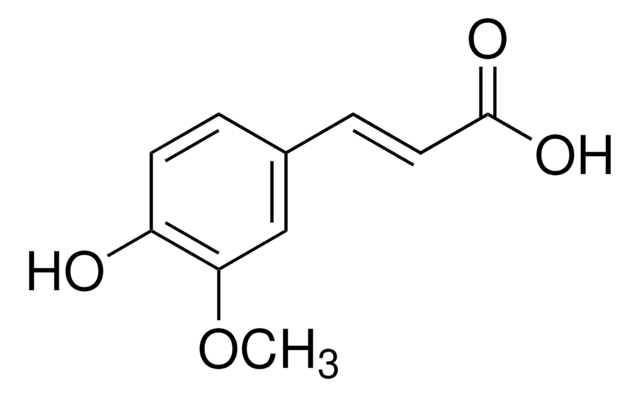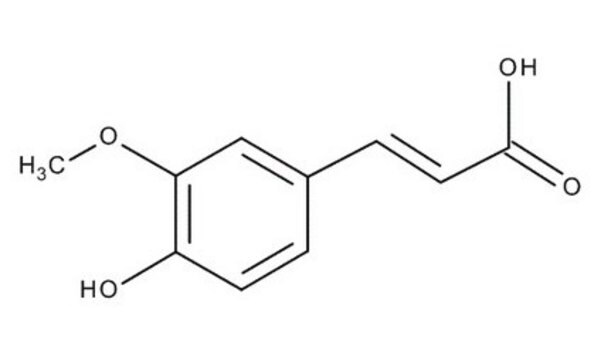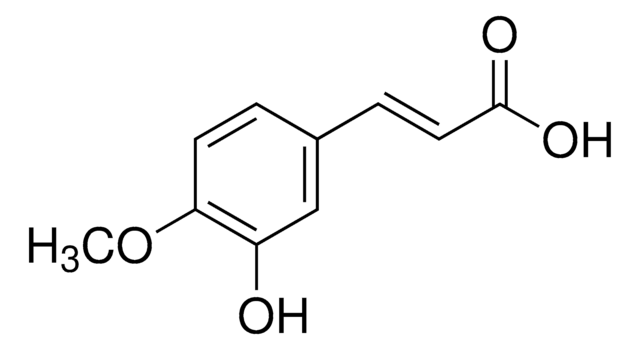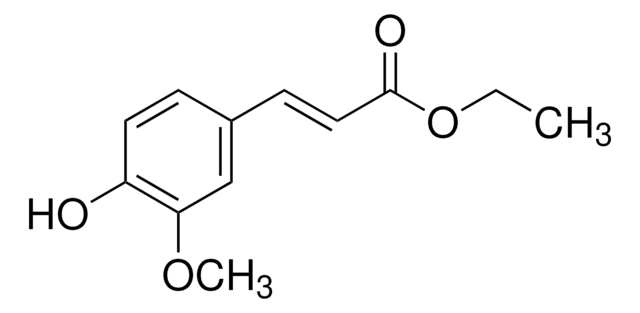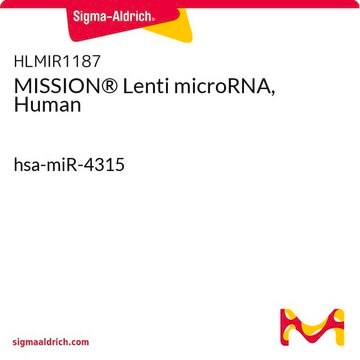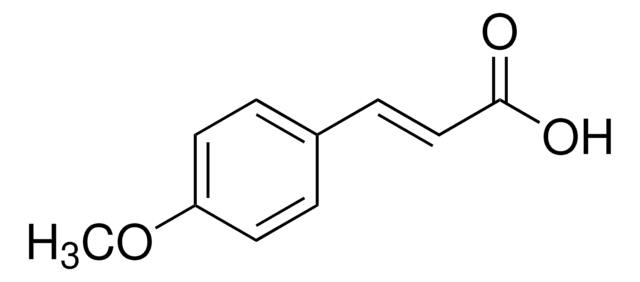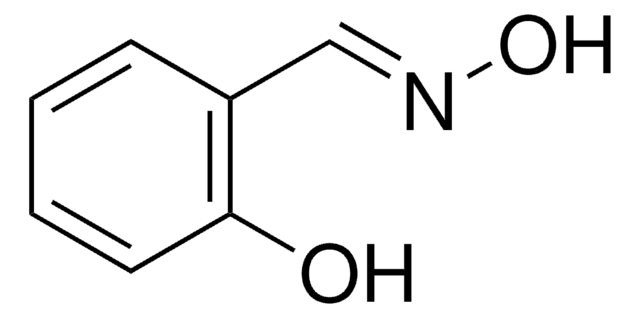가격 및 재고 정보를 현재 이용할 수 없음
추천 제품
분석
97%
양식
solid
mp
230 °C (dec.) (lit.)
작용기
carboxylic acid
SMILES string
COc1ccc(\C=C\C(O)=O)cc1O
InChI
1S/C10H10O4/c1-14-9-4-2-7(6-8(9)11)3-5-10(12)13/h2-6,11H,1H3,(H,12,13)/b5-3+
InChI key
QURCVMIEKCOAJU-HWKANZROSA-N
일반 설명
3-Hydroxy-4-methoxycinnamic acid, predominantly trans is available as white crystals. 3-Hydroxy-4-methoxycinnamic acid is isolated from the aerial part of Artemisia capillaris, Chinese medicinal plant[1]. It is a component of chinese herbal medicine used for a pain killer and stomachic[2]. It is an efficient acetylcholine inhibitor[3]. 3-Hydroxy-4-methoxycinnamic acid is bioactive metabolite of Spilanthes acmella Murr[2]. It increases the resistance of low-density lipoprotein (LDL) to oxidation[4].
Storage Class Code
11 - Combustible Solids
WGK
WGK 2
개인 보호 장비
dust mask type N95 (US), Eyeshields, Gloves
가장 최신 버전 중 하나를 선택하세요:
시험 성적서(COA)
Lot/Batch Number
이미 열람한 고객
Adriana Farah et al.
The Journal of nutrition, 138(12), 2309-2315 (2008-11-22)
Chlorogenic acids (CGA) are cinnamic acid derivatives with biological effects mostly related to their antioxidant and antiinflammatory activities. Caffeoylquinic acids (CQA) and dicaffeoylquinic acids (diCQA) are the main CGA found in nature. Because green coffee is a major source of
Sandra M Kern et al.
Journal of agricultural and food chemistry, 51(27), 7884-7891 (2003-12-24)
Hydroxycinnamic acids are antioxidant phenolic compounds which are widespread in plant foods, contribute significantly to total polyphenol intakes, and are absorbed by humans. The extent of their putative health benefit in vivo depends largely on their bioavailability. However, the mechanisms
A R Rechner et al.
Free radical biology & medicine, 30(11), 1213-1222 (2001-05-23)
The purpose of this study was to investigate biomarkers of the bioavailability and metabolism of hydroxycinnamate derivatives through the determination of the pharmacokinetics of their urinary elimination and identification of the metabolites excreted. Coffee was used as a rich source
C Castelluccio et al.
The Biochemical journal, 316 ( Pt 2), 691-694 (1996-06-01)
The hydroxycinnamates, intermediates in the phenylpropanoid synthetic pathway, are effective in enhancing the resistance of low-density lipoprotein (LDL) to oxidation in the order caffeic acid > ferulic acid > p-coumaric acid. It is unclear whether the mode of action of
Jonathan M Hodgson et al.
The British journal of nutrition, 91(2), 301-306 (2004-02-06)
Tea and coffee are rich in polyphenols with a variety of biological activities. Many of the demonstrated activities are consistent with favourable effects on the risk of chronic diseases. 4-O-methylgallic acid (4OMGA) and isoferulic acid are potential biomarkers of exposure
자사의 과학자팀은 생명 과학, 재료 과학, 화학 합성, 크로마토그래피, 분석 및 기타 많은 영역을 포함한 모든 과학 분야에 경험이 있습니다..
고객지원팀으로 연락바랍니다.